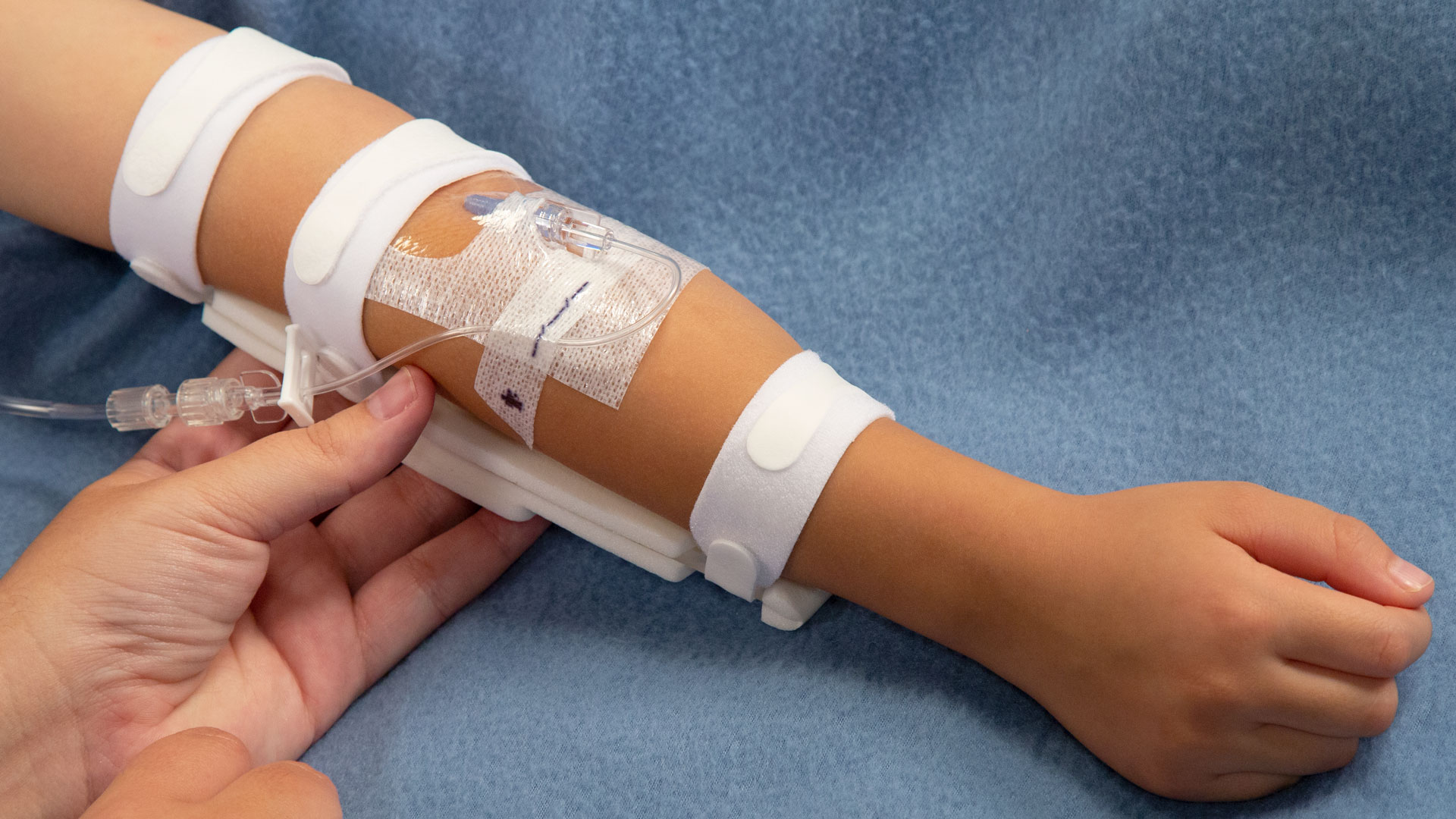How to Avoid Infiltration and Extravasation During IV Therapy
Intravenous therapy is a standard clinical practice. However, between 35-50% of IVs fail according to current medical reports. Peripheral IV infiltrations and extravasations, or PIVIEs, account for a large percentage of those IV failures. These complications can negatively impact patients’ recovery, with consequences ranging from mild discomfort to serious harm, such as permanent skin loss and impaired limb function.
It is important to stop IV complications before they happen. Here's an easy-to-follow guide on the causes of PIVIEs and how to avoid complications during IV therapy.
Looking for IV therapy solutions? Contact us to learn how I.V. House products can help increase patient safety.
What are PIVIEs?
PIVIEs are a harmful side effect of IV therapy that occurs when the IV catheter punctures through the vein or becomes dislodged. This causes the IV fluid or medication to leak into the surrounding interstitial tissue instead of flowing into the bloodstream as intended. While mild swelling and discomfort are the most common symptoms, PIVIEs can also lead to severe tissue damage, blistering, and skin and soft tissue loss if not caught and treated.
There are two main types of PIVIEs: infiltration and extravasation.
- Infiltration: Infiltration occurs when IV fluid leaks into tissue because of improper catheter placement or dislodgement. Signs include swelling, coolness, and pallor around the IV site.
- Extravasation: Extravasation happens when caustic IV medications leak into the tissue, causing local toxicity. Signs include stinging, burning, swelling, and redness.
What Causes Infiltration and Extravasation?
When healthcare professionals administer a drug through IV therapy, there is a risk of the solution leaking out of the veins and into surrounding tissue.
IV Infiltration can be caused by the following factors:
- The IV pierces a vein.
- The IV catheter is the wrong size or is improperly secured.
- The IV catheter is improperly placed or becomes dislodged.
IV Extravasation can be caused by the following factors:
- The IV catheter is improperly placed or becomes dislodged.
- The IV catheter is the wrong size or is improperly secured.
- The drug is administered too quickly.
- The medication is very acidic or basic.
- There is an obstruction in the IV line.
Both infiltration and extravasation can interrupt treatment and impact patient health if excessive fluid pools around the tissue. The health complications associated with PIVIEs span a broad spectrum, from minor irritations to severe consequences, including:
- Minor Irritations: Patients may experience irritation and discomfort at the IV site. This is often dismissed but should not be overlooked as these irritations can escalate into more serious issues.
- Skin and Soft Tissue Damage: More severe complications can include permanent loss of skin and soft tissue, which prolongs recovery and may require surgical intervention.
- Impaired Limb Functionality: In some instances, the affected limb may suffer from functional impairment, affecting the patient's mobility and quality of life.
- Compartment Syndrome: This is a severe and painful condition caused by pressure buildup from internal bleeding or swelling of tissues. It requires immediate medical attention.
- Distal Vascular Compromise: This involves obstructing blood flow to the extremities, which can lead to tissue necrosis if not promptly addressed.
- Loss of Extremities: In the most extreme cases, the complications can escalate to losing fingers or other parts of a limb, resulting in lifelong challenges for the patient.
How to Avoid IV Complications
To prevent IV site complications, you should first make sure you choose the proper IV insertion site and use the correct IV device and securement technique. When administering irritating solutions, it may be recommended to use a central line instead of a peripheral line.
Your clinical team should use standardized percentage measurement-based assessment tools during IV site assessments to catch complications and evaluate their level of severity.
I.V. House also recommends the Touch, Look, and Compare (TLC) approach for monitoring IV insertion sites. Assess the IV site according to your hospital’s protocol using the following steps:
- Touch: The IV insertion site should feel soft, warm, dry, and pain-free.
- Look: The IV insertion site should be uncovered, dry, and without redness.
- Compare: The IV insertion site and surrounding tissue should be the same size as the opposite extremity without swelling.
If something seems off, notify the appropriate team member, such as a hospital-acquired condition (HAC) champion or unit leader, as soon as possible to complete a bedside assessment on the patient. Once your team has verified the nature of the IV complication, begin appropriate treatment right away.
Also, educating patients’ families on the TLC method can help them be aware of signs and symptoms to watch out for. Remind patients and their families daily for as long as the IV therapy continues. Having more people checking the IV insertion site can increase the likelihood of catching and treating PIVIEs earlier.
Prioritizing Safety and Comfort in IV Therapy
PIVIEs represent a pressing patient safety challenge, but there are ways to improve patient safety and comfort. By focusing on preventative techniques, continuous observation, early detection, and patient education, providers can reduce the rate of PIVIE incidents and support more comfortable—effective—IV therapy.
I.V. House can help support nurses and increase patient safety during IV therapy. Our ergonomically designed IV securement devices, such as the TLC Splint and I.V. House UltraDressing, protect and stabilize IV insertion sites while improving access for nurses, making it easier to perform thorough assessments and catch early warning signs of IV site complications.
Please contact us to get samples or to set up a trial of I.V. House products.
